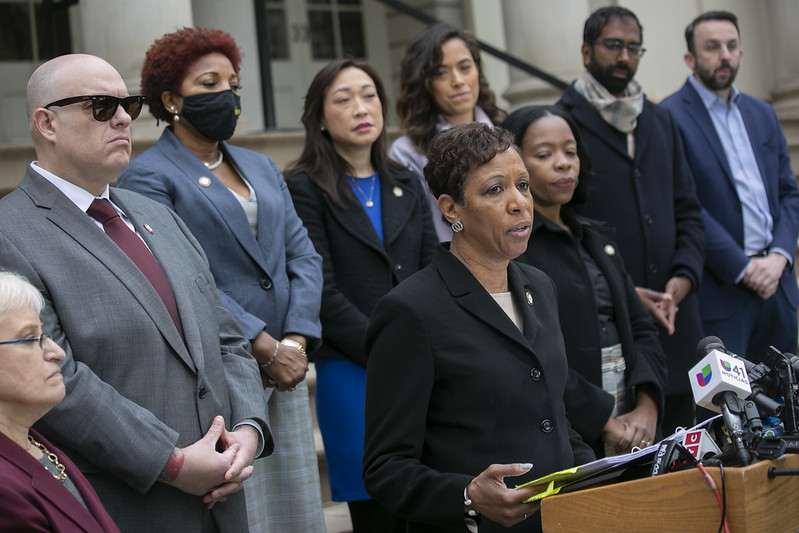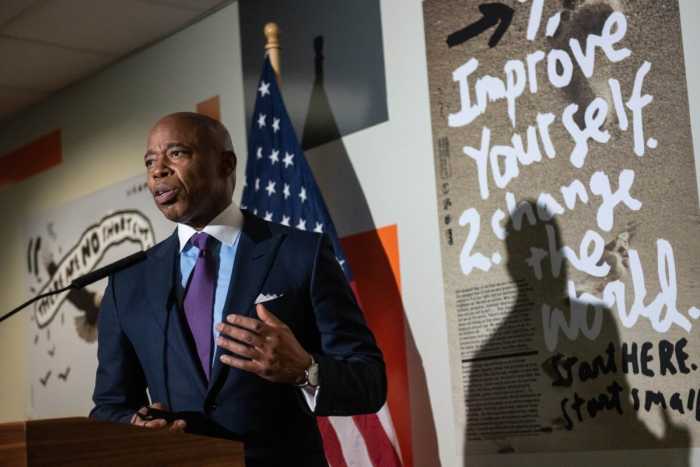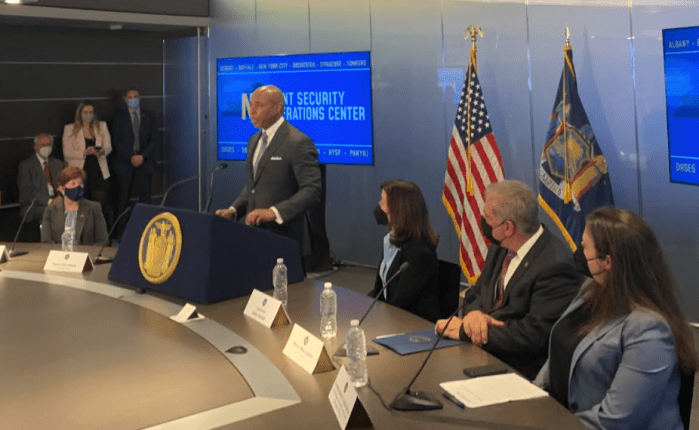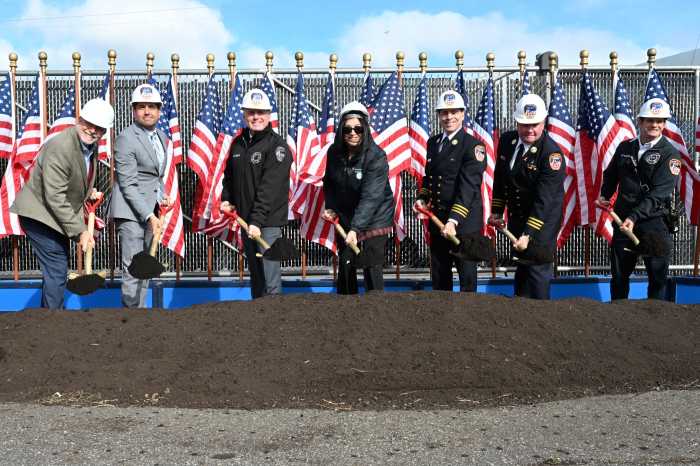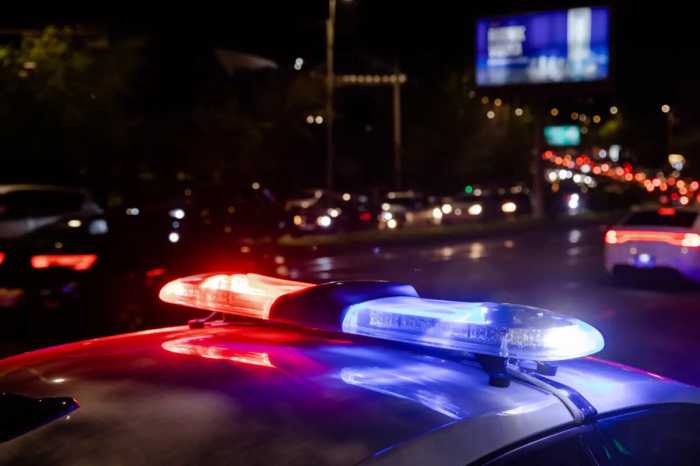I’ll see Mayor Adams’ executive city budget of $98 billion and raise it $1.3 billion on priorities like expanding youth programs, education and health care to achieve public safety.
That’s what the City Council leadership said on the steps of City Hall Monday in a game of political poker a day ahead of the Mayor’s upcoming preliminary budget presentation Tuesday.
Council Speaker Adrienne Adams (D-Queens) framed the council’s budget as an investment in making the city safer and healthier at a time of high crime when the city is trying to recover from the COVID-19 pandemic.
“The council’s budget vision prioritizes key investments in communities that promote health, safety and opportunity for all New Yorkers,” Adams said. “It recognizes that when we invest in the programs and resources for people to be healthy, and access opportunity and well being, we can make our communities and cities safer. By investing in our young people, expanding access to physical and mental health care, promoting community based safety solutions that deter crime and violence, and ensuring all residents can access essential programs and opportunity, we can achieve the health and safety outcomes that all New Yorkers want.”
Council Finance Chair Justin Brannon (D – Brooklyn) said this budget is not just a list of spending priorities but rather a reflection of what the council truly cares about. And that’s why the council is calling for spending on giving more resources to communities that have the least.
“This council recognizes that the safest and healthiest communities are the ones with the most resources,” Brannon said. “And therefore, we must double down on investments in the programs and resources for people to live healthy and access opportunity. We can make our communities safer and stronger for all.”
When it comes to expanding youth programs, the council is calling for several increases in spending compared to the mayor’s budget. This includes $57 million in additional spending for year-round youth employment programs including Work, Learn and Grow (WLG) and Advance & Earn.
They also called for more funding for the Saturday Night Lights (SNL) program – which provides sports and arts activities for youth outside of school hours in the communities most impacted by violence – by $5 million each year.
Investing in programs inside of school buildings is also a top priority for the city’s legislature. The council’s Committee on Education chair Rita Joseph (D – Brooklyn), said the city has a moral obligation to invest in its public schools.
“Our students are the future. If we fail to invest in them, we’re failing to invest in the city’s future,” Joseph said. “We have to invest in our schools and programs that help all of our students thrive by providing the skills, social and emotional learning, and support that every child deserves and requires. We also need to ensure that our students who need additional supports, such as my old English as a New Language (ENL) students. Or the more than 6000 Department of Education (DOE) students in foster care receive the support they deserve, so that they can access opportunity and success.”
These investments include doubling the $10.3 million in funding for the city’s career and technical education (CTE) program, which would expand the program from 83 to 160 high schools across the city. Additionally, the council wants to see $14.1 million put towards hiring social workers and guidance counselors at 100 schools, with the goal of reaching all District 79 alternative education schools by 2026.
The council also wants to increase investments in mental and physical health across the city. Council Majority Leader Keith Powers (D – Manhattan) said the city is currently underfunding mental health programs while its going through a mental health crisis.
“The pandemic has exacerbated, for many, the mental health crises here, or created a new one for many New Yorkers,” Powers said. “And yet we still have budgets that severely underfunded the critical mental health services that New York City needs right now. So, this budget response that we’re putting out tries to correct course, by making a significant investment and enhancements in the mental health services in this city. So that we don’t have to go another year, we don’t have to open up the newspaper another morning and see that mental health crisis right in front of our eyes.”
One of the biggest mental health funding priorities for the council, Powers said, is adding $61 million to the city’s Behavioral Health Emergency Assistance Response Division (B-HEARD), which deploys mental health specialists and paramedics for certain types of 911 calls. Although the program is included in the mayors’ “Blueprint to End Gun Violence,” he didn’t include any additional funding for it in his preliminary budget.
Additionally, Powers said, the council wants $11.5 million more in funding for the Street Health Outreach and Wellness (SHOW) teams that provide services to homeless individuals.
When a reporter asked where the money would come from for all of this additional spending, Brannon said the city has the money based on conversations with the council’s economists.
“Basically, what we’re saying today is that we’re not going to cut our way out of a recovery, we have to invest,” Brannon said. “The money is there. And what the council has put forward is not only additional spending, but also additional savings. And that’s what the next month of executive hearings are really going to dig into. We believe the money is there. And we believe that this is where it should be invested.”


